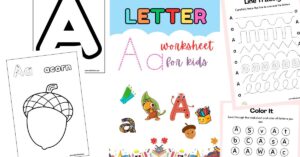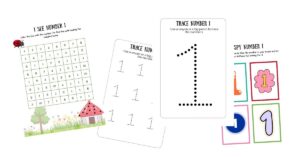Sensory play is crucial from the moment a baby is born. Even without knowing it, you start sensory play with simple exercises like moving a finger in front of the baby’s face smiling, and dangling toys above their crib. However, as they grow, the sensory play activities become more advanced, and that’s where sensory books come into play. Sensory books efficiently improve your child’s development, but like most parents, you may be wondering when’s the best time to introduce these books.
Sensory books are good for children between 4 months and 6 years or older, depending on your child’s developmental milestones. Introduce sensory books to your child when they are four to six months old. At this age, babies can identify faces, colors, pictures, and objects. They can also move their hands and push themselves up to their elbows. Thus, they can interact with the images in a sensory book comfortably.
Every child’s development differs, but four months is the perfect time frame to introduce sensory books. I introduced my firstborn daughter to sensory books at six months because I was still unsure and new to motherhood. However, seeing how fast the books enhanced her development, I decided to start earlier with my last born.
Five Reasons Why You Should Introduce Sensory Books Earlier
The best way to know if your child is ready for sensory books is by checking their development. If your child can look at an object for a while or is trying to reach for an object of interest, they are ready for sensory books.
Sensory books or quiet books may not have words, but they stimulate your child to learn and develop skills such as fine motor skills. Kids can touch and feel the different textures which introduce them to a new world, one you can use to tell stories. Here are other notable benefits of sensory books.
1. Sensory Stimulation
Sensory books offer great multi-sense stimulation. Your child will learn through touching, hearing, seeing, and engaging in the activities in the book. In addition, these books will slowly enhance your child’s attention span and stimuli tolerance. In fact, hypersensitive babies and those with autism spectrum disorder benefit a lot from multi-sensory stimulation.
2. Improved Motor Skills
Sensory books improve your child’s motor skills, from movement to hand-eye coordination. The babies will exercise their muscles and enhance skeletal movements when they move to touch images or turn a page. In addition, fun tasks like identifying colors, letters, and objects require visual scanning, which facilitates hand-eye coordination.
Overall, sensory books cater to the baby’s gross motor skills. Moreover, these sensory books are excellent for encouraging tummy time. In my case, I would identify my baby’s favorite book and place it a few feet from her to trigger movement.
Within minutes, she would move on her belly and grab the book, strengthening her neck and prepping her for crawling. I implemented this simple hack to make tummy time exciting, and I would 100% recommend it.
3. Exercises Memory and Enhances Attention Span
As parents, we understand how hard it is to keep our babies engaged for a long period. Usually, they spend a few minutes playing with one toy and immediately switch up to the next exciting thing. But luckily, sensory books enhance a child’s attention span.
The books have many colorful images that capture your child’s attention. What’s more, they’ll see a new image or activity whenever you open a new page, which is enticing for them.
In addition, interacting with the book’s contents positively impacts your baby’s memory. The book’s pictures, concepts, and activities trigger their understanding, improving their memory. For example, after a few days of skimming through the books, your child will quickly identify the pictures. Memory improvement ultimately impacts performance at school and social interactions.
4. Boosts Creativity, Problem Solving and Fosters Mental Growth
Developing a child’s creativity has several positive results, such as improving performance, fostering mental growth, and enhancing problem-solving skills. In addition, creativity teaches innovation and solidifies a child’s self-confidence.
The books feature many characters, scenes, letters, and activities that tap into your child’s creativity. For example, your child can exercise creativity at approximately one year by completing simple puzzles and pairing colors or letters. The secret is to guide them first, then gradually refrain from doing it for them and allow them to explore. Don’t worry if they get it wrong a few times; it’s all part of the learning process.
5. Introduces Language Learning and Builds their Vocabulary
Reading to your child may introduce them to language, but engaging them through sensory books enriches their language and helps build vocabulary. Generally, learning is easier when you can put an image to the word. For example, if I teach my child the alphabet, she’ll understand things better by seeing the letters.
Similarly, sensory books have many letters, sounds, objects, and words that add to your child’s vocabulary and literacy. Of course, at four months old, they won’t be able to mouth words. However, you’ll notice significant improvements by the time they’re one. There are sensory books for every stage of a child’s development, meaning you can improve their vocabulary depending on their age.
Sensory books are great for any age, but they are more effective when you introduce them to your child between four and six months. For a smooth transition, you can start reading to your child from month one, then read and point out images around month three before finally engaging them. Of course, it is not always smooth, and sometimes your baby will be disinterested. But don’t give up; maintain a consistent routine, and soon enough, they’ll be easily pointing out colors and numbers.




